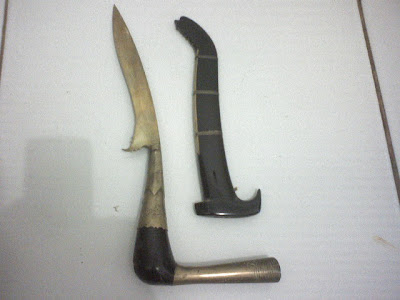Keris is something that very closely, especially with Javanese culture. In the "Legend of Java" is said, that to be a true man, then someone must have five things, namely: an heirloom kris; a horse; pet birds; a woman and a house.Kris in Javanese culture is viewed and treated as a "symbol" and "status" for the owner, rather than as a "killer tool" (Martial Weapon). Almost every aristocratic Javanese family, you can bet they have a Keris Family Heritage, which has a typical efficacy-efficacy. Owning a Heritage Keris, requires one to meet a variety of rituals, one of which is the ceremonial bathing the keris, which is generally done every year and it depends completely to their respective owners, how they are in doing so.Complicating the issue of the keris is also result in not easy for someone kris ownership issue, which was not as easy to have other personal items. To have a dagger that contain cultural meaning, require a person to do some rituals, to ascertain
whether the keris is "paired" with sipemilik and how the subsequent maintenance expected by the si-Keris.
Moving his hand a dagger is not marked with a fistful of money perpindah hand. Like the person who will perform the marriage, the union between a dagger with a new owner, is characterized by a "dowry" or "Mas Marriage" which was approved by both parties, including the-Keris, through a "medium". Problems can result in very serious, because if the-Keris can not accept new owners, then it can be fatal to the new sipemilik.The complexity of this keris issue including how to bear the si-Keris. It depends penyandangnya for the sake of what? If all the problems of ritual is ignored, it will only cause the-Kris is furious and when it's so, it is a harmonious atmosphere between the-Keris and its owner became distracted and misfortune could have happened.!The complexity of world problems Keris seems also a difference of opinion about where the origin of the word "Kris" is derived? In the book "Encyclopedia Kris" sold dimuseum Kris, Kris explained that the first word found on a bronze plate with the words "sharps" which is found around the year 825, the village Karangtengah. That said, the next word "crunch" that is the forerunner of the word "Keris" we know today, with all sorts of mysteries.





 16.23
16.23
 Nasrul Umam
Nasrul Umam





























